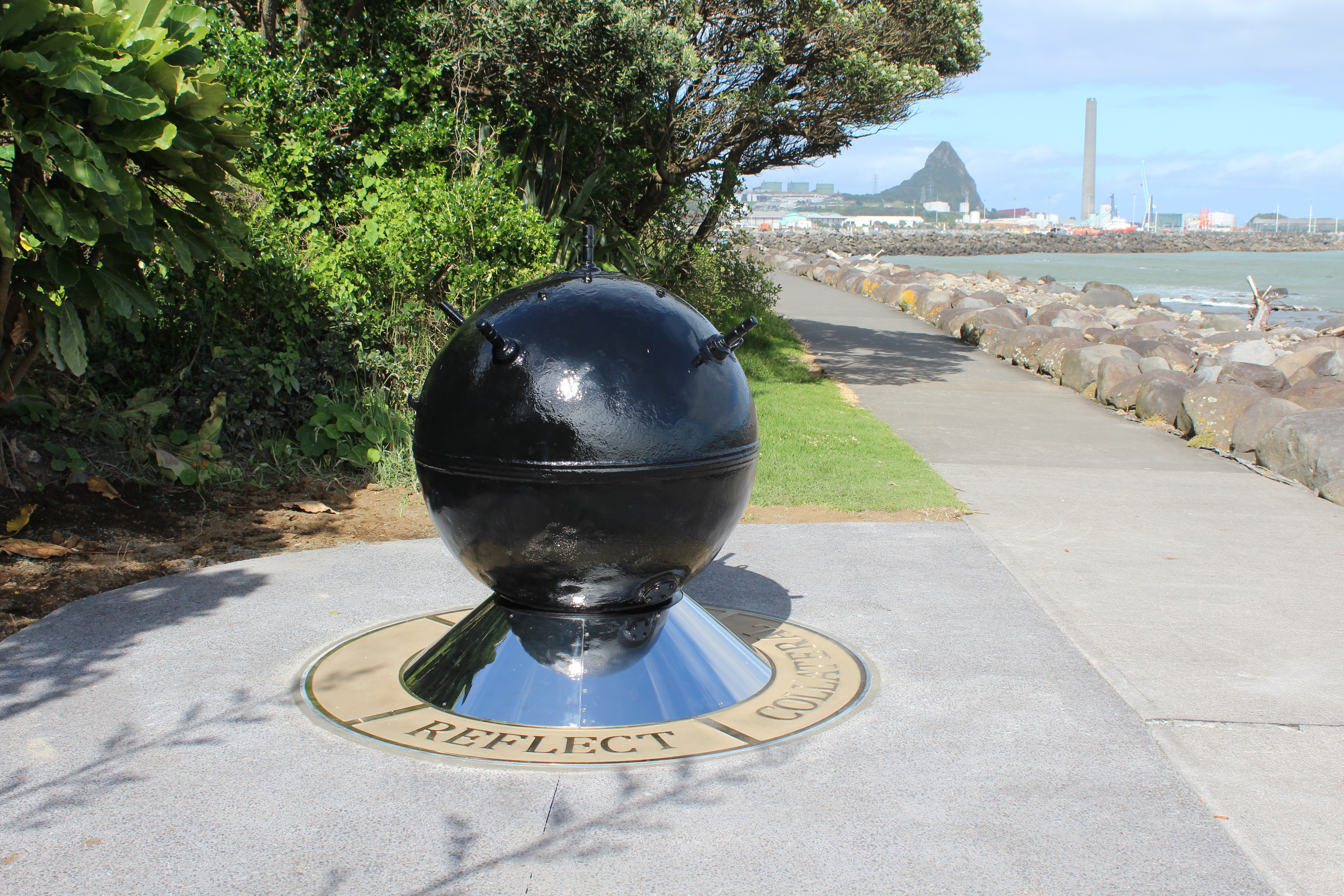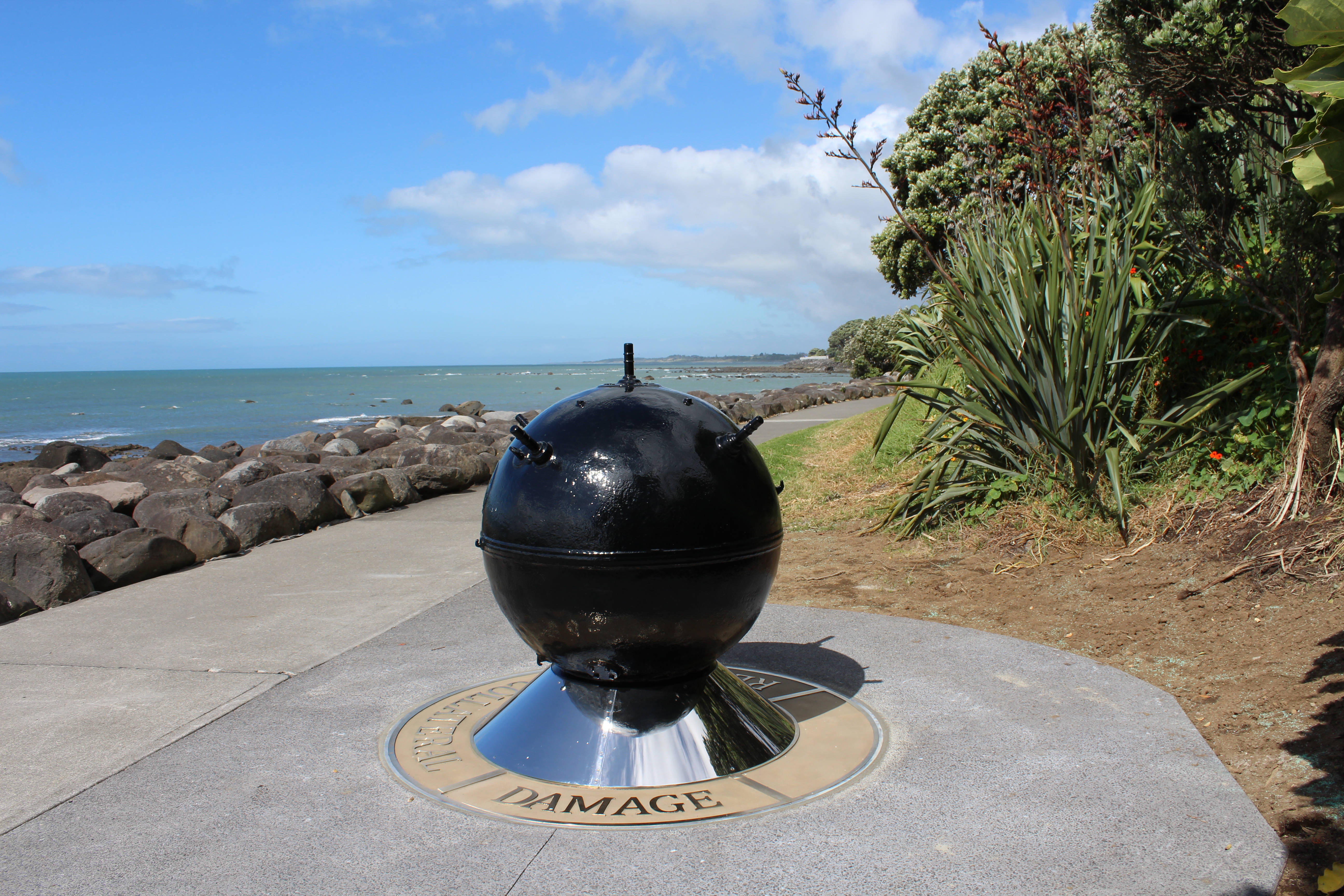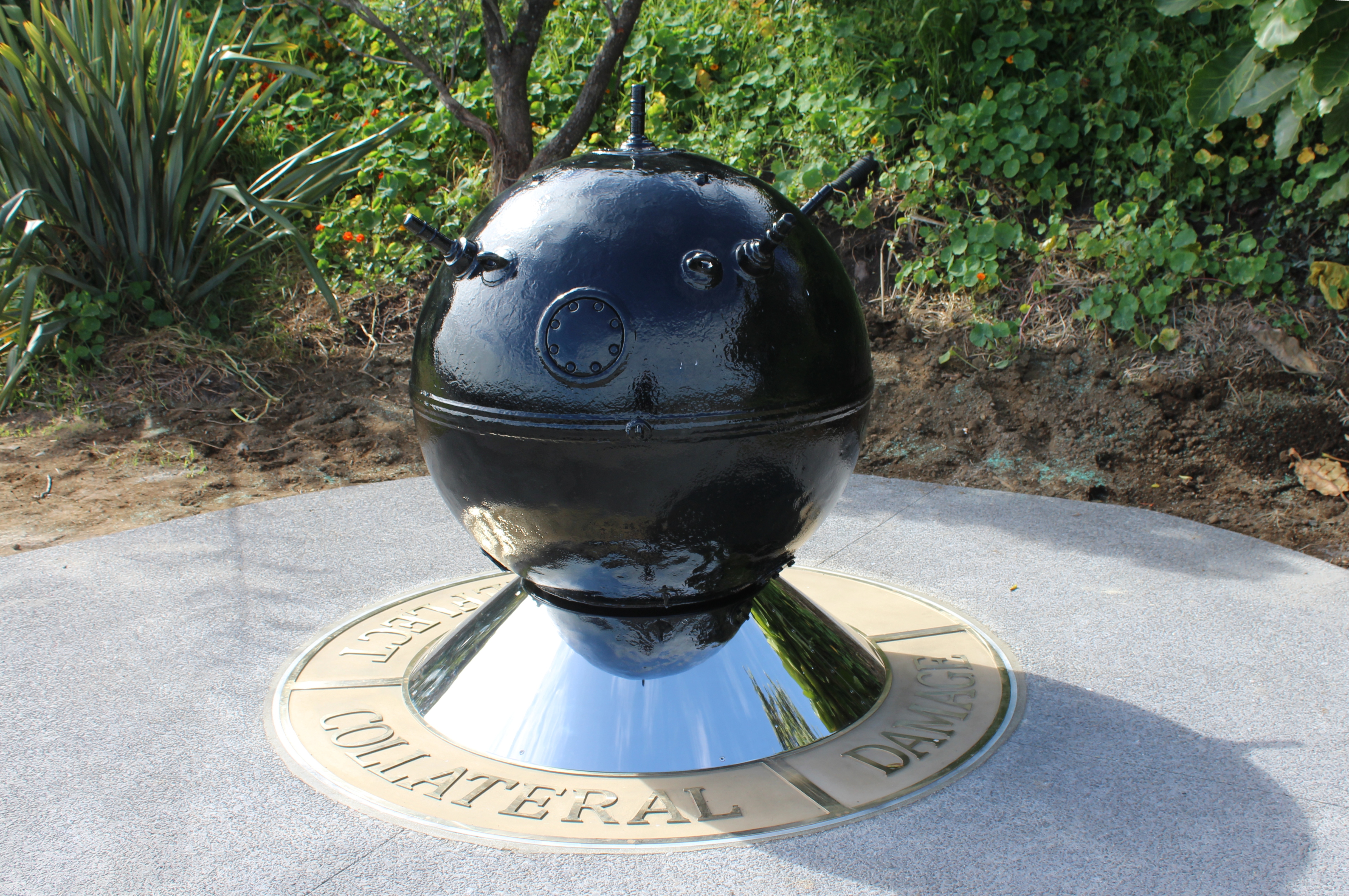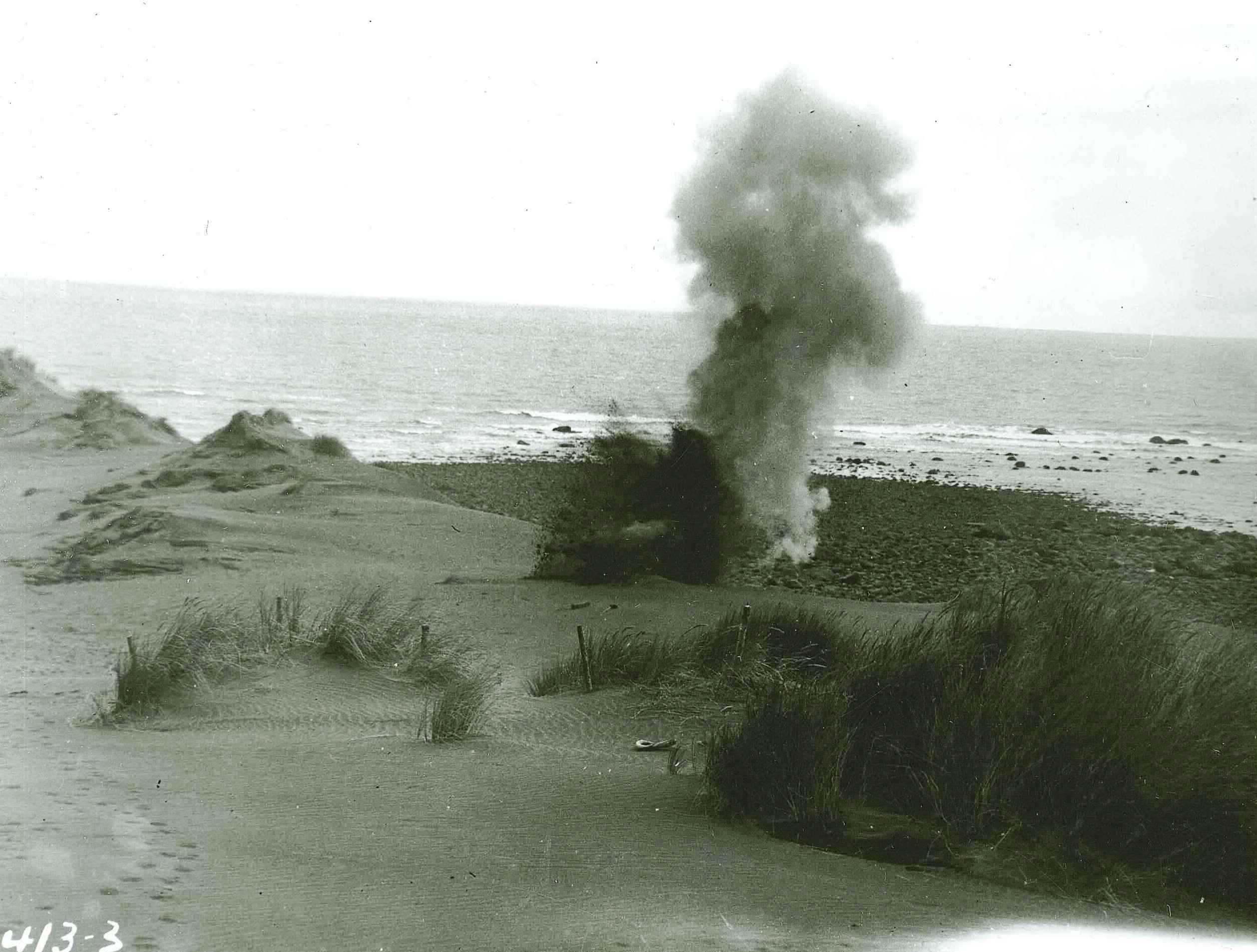







A German anti-shipping mine which was washed ashore at Belt Road, New Plymouth on 15 February 1943. It was thought to be one of a number laid off the south Australian coast by the German Navy during World War II.
The mine was recovered and disarmed by New Plymouth's 2C Section, NZ Engineering Corps, Bomb Disposal Group.
It was at one stage displayed in the Waitara Marine Park but afterwards recovered by Mike Zeier from the Waitara Borough yard. After a stint in Zeier's garden, it was mounted outside the New Plymouth RSA in Devon Street East, but it was put in storage at Port Taranaki when the RSA moved from the premises in 2012.
The port company restored the mine and, with the aid of the Art in Public Places Trust and Pace Engineering, arranged for its installation on the Walkway near where it came ashore.
The mine was used as a centrepiece for a public artwork - Reflect Collateral Damage - by Dale Copeland. It was installed on the Coastal Walkway in December 2015.
It is a Type-EM naval moored contact mine similar to the one at Mokau. They were probably laid by the German naval ships - Penguin & Passat near Melbourne or in Bass Strait in late 1940. (Ref: Cooke & Maxwell, Great Guns, 2013)
Three mines are known to have washed ashore on Taranaki beaches during the war - at Bell Block on 28 November 1942 (See image above), Mokau on 2 December 1942 and Belt Road, 15 February 1943.
Further Reading: Great Guns: The Artillery Heritage of New Zealand, Peter Cooke and Ian Maxwell (2013)
Related documents:
The Day WW II Touched New Plymouth (Daily News 14 February 1998)
Taranaki Wartime Memories as Mine Returns (Daily News 7 October 1999)
Explosive Artwork Lands on Coastal Walkway (Taranaki Daily News 15 December 2015)
The Story Behind the Art (North Taranaki Midweek 20 January 2016)
Please do not reproduce these images without permission from Puke Ariki.
Contact us for more information or you can order images online here.